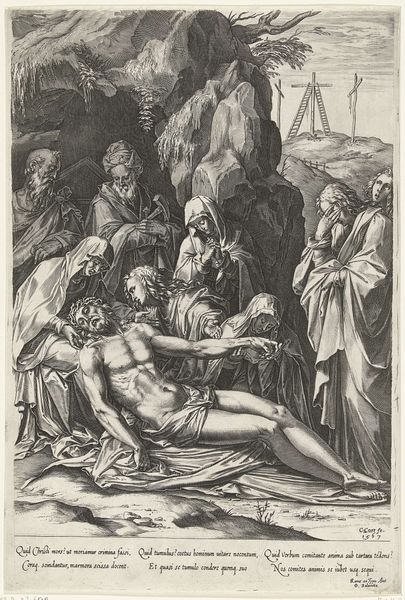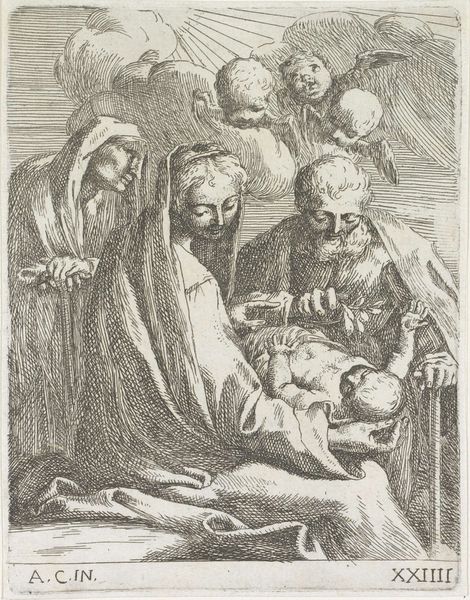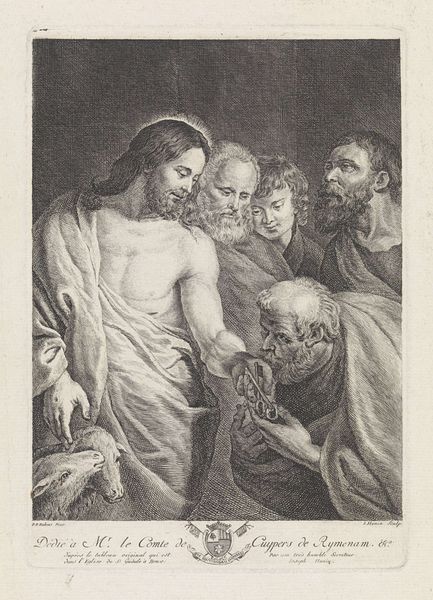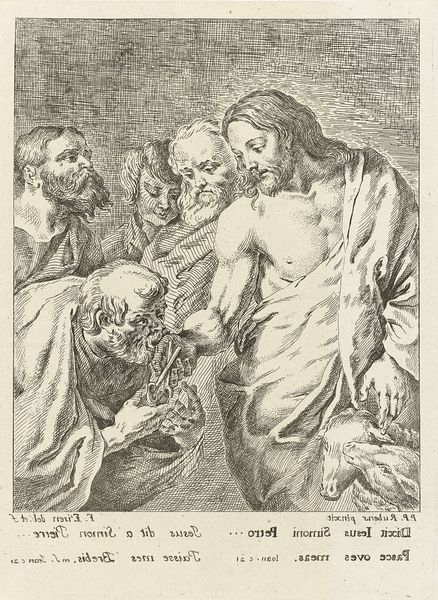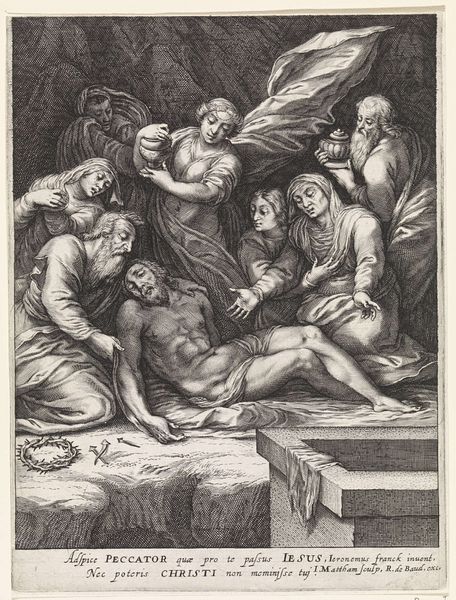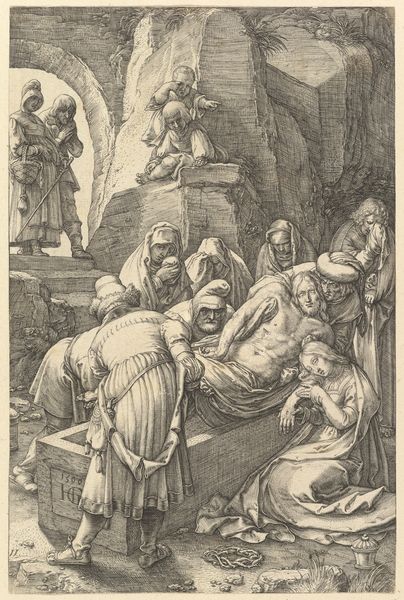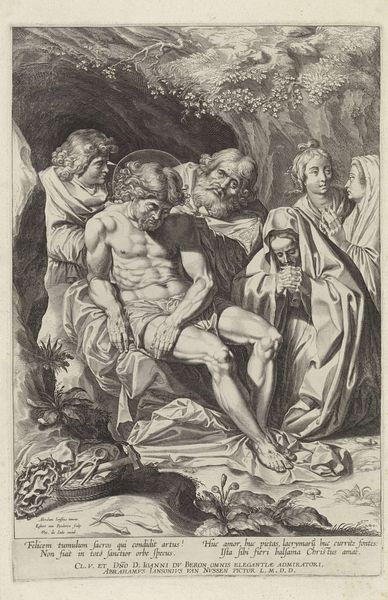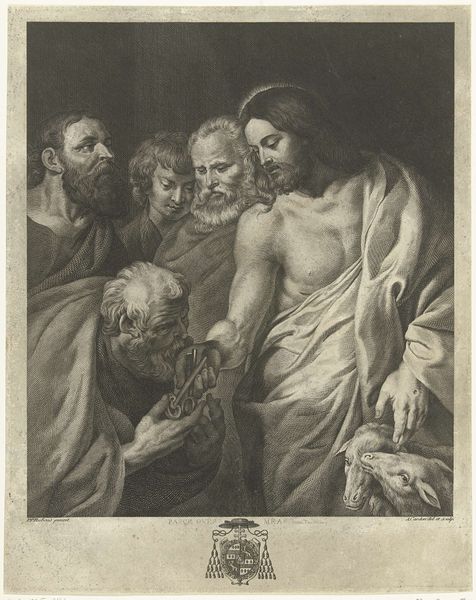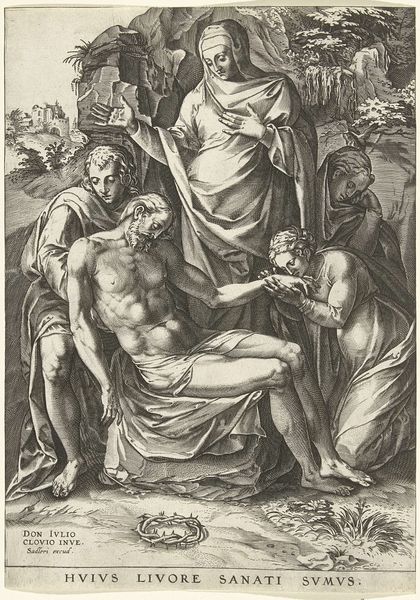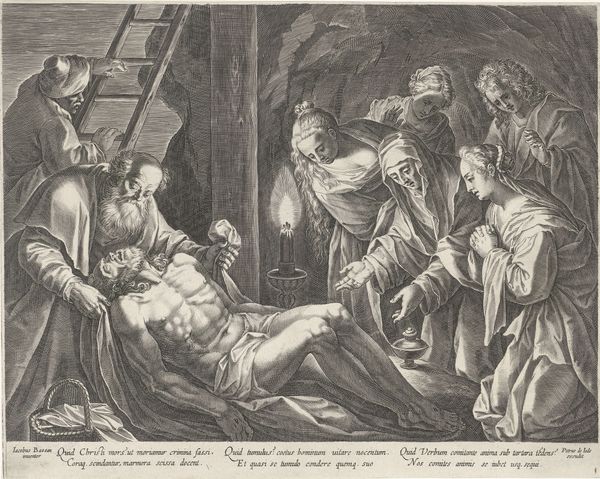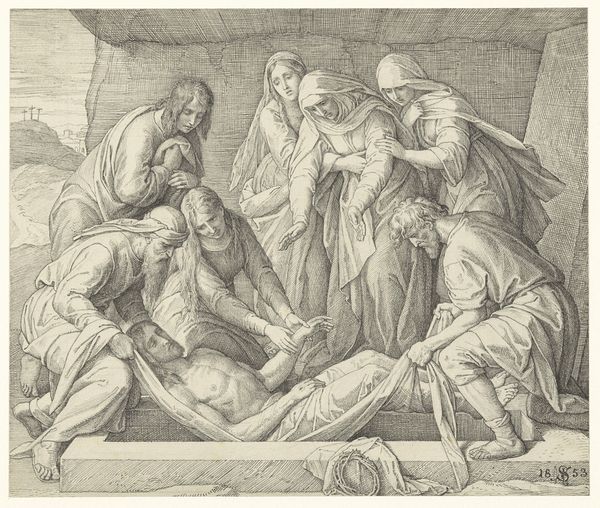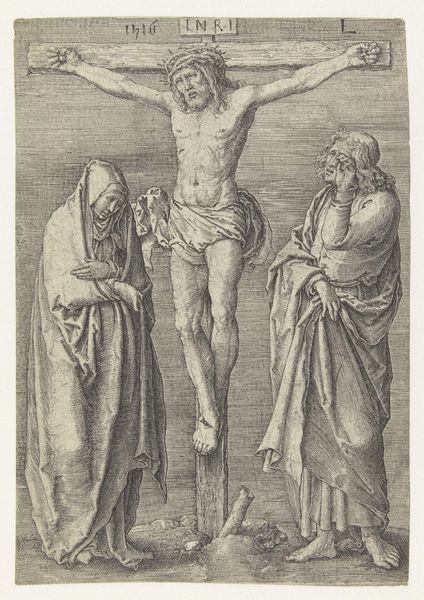
engraving
#
portrait
#
baroque
#
figuration
#
group-portraits
#
line
#
portrait drawing
#
history-painting
#
engraving
Dimensions: height 325 mm, width 217 mm
Copyright: Rijks Museum: Open Domain
Alexander Voet the Elder created this engraving, “The Entombment,” sometime in the 17th century. It depicts the body of Christ being placed in a tomb after the crucifixion, surrounded by grieving figures. This image reflects the religious and cultural milieu of the time, a period marked by intense religious devotion and the proliferation of devotional art. The engraving itself, as a medium, speaks to the increasing accessibility of art to a broader audience through printmaking. The emphasis on Christ's suffering and the emotional responses of those around him aligns with the Baroque artistic focus on evoking strong emotional responses in viewers. The work prompts us to consider the social function of religious art in the 17th century, particularly its role in reinforcing religious beliefs and moral values. To fully appreciate this, we might look at the history of the Catholic Church during the Counter-Reformation, the patronage systems that supported artists like Voet, and the ways in which art served as a form of religious instruction and propaganda. Ultimately, understanding the art requires us to consider the social, cultural, and institutional contexts in which it was produced and consumed.
Comments
No comments
Be the first to comment and join the conversation on the ultimate creative platform.
